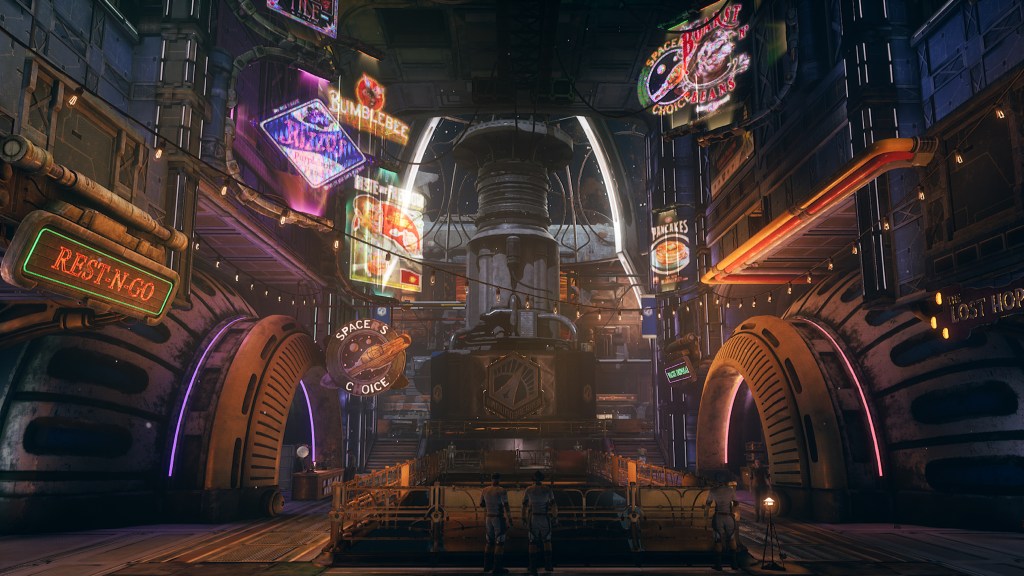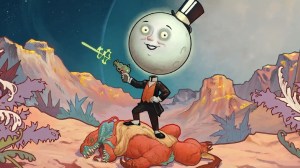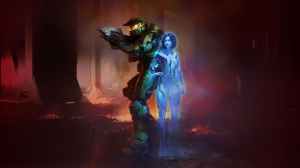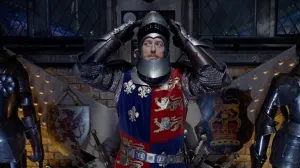As a Fallout veteran, stepping into The Outer Worlds 2 felt like opening a portal to a galaxy where satire hits harder than any laser rifle. Microsoft recently gave me the opportunity to preview their upcoming RPG, essentially the full prologue, and it immediately threw me into an interesting universe full of sharp humor and high stakes.
Videos by ComicBook.com
From the first moments, it was clear that the game delights in poking fun at corporate dystopias and bureaucratic nonsense, all while hinting at more serious undertones. The world is full of personality, and I was eager to see if the gameplay, systems, and narrative could match the wit and ambition developer Obsidian Entertainment is known for.
After several hours of hands-on with the preview build, my answer is somewhat nuanced and maybe a little complicated. There is plenty of promise, but also some unevenness that stood out from the upcoming sequel.
The Outer Worlds 2’s Character Backgrounds Makes Characters Feel Distinctly Different

The Outer Worlds 2 preview started with a sharp, satirical intro before tossing me into character creation. It is not the deepest system I have seen, but I appreciated how much ownership it gave me. Backgrounds ended up being the most interesting part. Picking one did not just change flavor text. It altered how I could approach conversations. My Ex-Convict background had my character leaning into self-centered, brazen dialogue, while on another run, choosing a Renegade pushed me toward cunning, law-skirting choices. Those touches made conversations feel distinctly mine.
Skills carried that same weight. Hacking let me reprogram and disable robots. Sneak gave me an entire alternate route through the prologue. Lockpicking gave me access to loot and hidden spaces that made me feel clever every time I cracked a lock. Cosmetic customization was what you would expect, with sliders and hairstyles, but I got a kick out of being able to equip prosthetic limbs for a little extra personality. Traits are layered on as an interesting risk vs reward choice. One trait gave me a single strong bonus with no strings attached, but stacking more than one meant I had to take a negative trait that severely affected gameplay. It’s a trade-off that some may find hard to justify, but I appreciated the option to make that choice myself.
For difficulty, I tried everything from Story to Very Hard. Very Hard absolutely lived up to its name. Enemies were incredibly accurate and hit like trucks. Mistakes got me killed quickly so very often that it felt like the game was not messing around, even this early.
The Outer Worlds 2’s Choice-Driven Gameplay Really Matters, But There Are Limitations

I stepped into the role of a Commander for the Earth Directorate, essentially an elite enforcer tasked with cleaning up corruption across the galaxy. My first mission sent me into Horizon Point, a research facility outside the Directorate’s jurisdiction and, thus, was not officially backed. As a result, my success depended entirely on my squad of elite, and if we failed, the Directorate would wash its hands of us, not because of the failure, but because they could legally do nothing to assist.
I liked this hook. It gave the story a sense of fragility, like authority was just one bad call away from falling apart. It also made my squad feel more important, and it did not take long for them to stand out. From the overeager Niles to the sharp-tongued Helan, among others aboard my ship, solid writing and strong voice acting really sold their characters. Combined with my Background and Traits, dialogue often felt like it had been written just for my Commander. I had moments where I laughed, where I got to play coldly logical, and where I leaned into being pragmatic. That flexibility made conversations feel great, and I really enjoyed the robust options presented here.
Obsidian’s reputation for choice-driven gameplay is well-earned, and it’s clear from my time with the preview that this hasn’t changed. I ran through the preview slice a few different times to test how different things could feel from utilizing alternative choices. The first time, I went in loud with guns blazing, mowing down waves of armored robots and soldiers. It was brutal, and I burned through most of my healing items just to survive. The second time, I went full stealth. I crept past patrols, hacked some terminals, picked a few locks, all before shutting down an entire wing of machines without ever firing a shot. The pacing could not have been more different: tense, quiet, almost puzzle-like compared to the frantic firefight.
What impressed me most was that these were not cosmetic differences. In my stealth run, taking this route opened up an entirely new area where I could disable the hostile machines. Doing so disabled them completely for the rest of that playthrough, resulting in an eventual crossover scenario where I fought easier soldiers instead of where the hostile robots would normally be. It really felt like two different missions, with stealth clearly being the most efficient of the two routes.
That said, the narrative balance was not perfect. My Commander and my squad were set up as this elite fighting force, yet we were hilariously lightly armed, firing what felt like peashooters against heavily armored robots. From a narrative design perspective, this created a jarring disconnect. It built up that I was supposed to feel like a capable, high-stakes enforcer, leading a skilled team through a dangerous, covert mission, but the gameplay kept reminding me of just how underpowered we actually were.
I understand this is the start of an RPG and gear progression is a thing, but the narrative beats, the tension, the stakes, and the sense of authority did not match what I was actually doing in combat. Instead of feeling like a competent Commander, I felt like a slightly incompetent rookie in the wrong universe. That dissonance pulled me out of the story and made it harder to buy into the narrative of being part of an elite, feared Directorate team. Maybe it is something that smooths out later, but in this preview slice, it definitely stood out as a pain point. The gameplay to narrative disconnect was apparent, and it did take away from the enjoyment.
There’s Hope for The Outer Worlds 2, But the Combat Feels Lost

Mechanically, The Outer Worlds 2 is still very much a first-person shooter, although there is a third-person option, which I found clunky and quickly abandoned. Gunplay felt serviceable but not amazing with starter weapons, while melee combat surprised me by feeling more meaty than what I was expecting. Light and heavy attacks, blocking, and rewarding sneak strikes gave melee a nice rhythm. The highlight for me was the Time Dilation device. Slowing the world down to line up shots or reposition gave combat some much-needed tactical flavor. I liked that firing in dilation drained it faster because it forced me to think strategically instead of spamming it.
Skills fed directly into gameplay again. Hacking, Engineering, and lockpicking consistently opened up alternative routes or options for solving problems. Perks are another layer of progression in The Outer Worlds 2, and while I did not get access to perks during the preview due to the lack of experience points, just reading through some of them made me laugh out loud. The Serial Killer Perk, for example, literally lets you harvest human hearts from suitable corpses for bonus health. It’s grotesque, it’s absurd, and it’s completely Outer Worlds. There were a ton of gameplay-altering perks like Serial Killer in the list, and as someone who adores character progression choices in RPGs, it gave me a warm and fuzzy feeling of what’s to come.
By the time I wrapped up, my feelings were mixed but hopeful. The writing, humor, and choice-driven design were exactly what I wanted, but the combat rarely delivered the punch I expected. Even on Very Hard, enemy encounters felt quite repetitive and underwhelming. Starter weapons left me feeling underpowered, and firefights lacked the sense of impact or stakes that the narrative promised. Stealth runs were more engaging than combat-heavy ones, which highlighted that even the best tactical tools couldn’t fully rescue encounters that otherwise felt flat.
By the end of my preview, I left impressed with the writing, humor, and choice-driven gameplay, but a bit disappointed by the combat. The narrative and character options shine, making me eager to explore different paths and builds. Yet, combat remains serviceable rather than spectacular, often failing to match the sharp wit and high stakes of the story
The Outer Worlds 2 is set to launch on October 29, 2025, for PC via Steam, Epic Games, and Battle.net, as well as PlayStation 5 and Xbox Series X|S, with pre-orders currently available.









